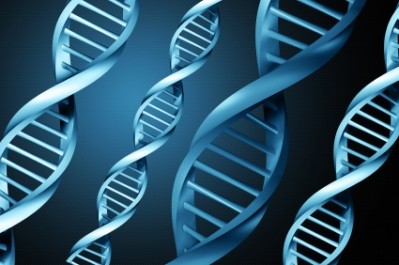Research points to nano-sized titanium oxide contributing to oxidative stress

Researchers at the Georgia Institute of Technology have been focusing their research on the effects nanoparticles of TiO2 can have on the activity of genes expressing enzymes that address oxidative stress inside two types of cells.
Although the researchers point out that the nanoparticles are not considered toxic at low concentrations, the research has focused on how this cellular effect could add to possible concerns from longer-term exposure.
The research process
The researchers used high-throughput screening techniques to study the effects of titanium dioxide nanoparticles on the expression of 84 genes related to the cellular oxidative stress, which helped pinpointed six genes affected by a 24-hour exposure to nano-sized TiO2.
In a recent article in the Journal of Physical Chemistry, the researchers reported that the effect was seen in two different kinds of cells exposed to the material – Human HeLa cancer cells and a line of monkey kidney cells, while a nano-sized polystyrene placebo had no effect.
"This is important because every standard measure of cell health shows that cells are not affected by these titanium dioxide nanoparticles," said Christine Payne, an associate professor in Georgia Tech's School of Chemistry and Biochemistry.
"Our results show that there is a more subtle change in oxidative stress that could be damaging to cells or lead to long-term changes. This suggests that other nanoparticles should be screened for similar low-level effects."
Determining the oxidative stress effect
To determine the level of oxidative stress, the researchers focused their research on the two types of cells with titanium oxide levels at 100 times less than the concentration known to effect cell health.
After 24 hours of incubating the cells with the nano TiO2, the cells were then lysed and their contents were analysed using both PCR and Western Blot techniques to determine the expression of the 84 genes associated with oxidative stress.
Drilling down on the changes found in the expression of the six genes, the scientists discovered that four of the genes were from the peroxiredoxin family of enzymes, which help cells degrade hydrogen peroxide - a byproduct of cellular oxidation processes. In excess, hydrogen perioxide can create stress that damages DNA and other molecules.
The researchers noted that the effect measured was significant, with changes of around 50% in enzyme expression compared to cells that had not been incubated with nanoparticles.
Up-regulation and down-regulation
"One thing that was really surprising was that this whole family of proteins was affected, though some were up-regulated and some were down-regulated," Kemp said.
"These were all related proteins, so the question is why they would respond differently to the presence of the nanoparticles."
The researchers say they have not determined how the nanoparticles bind to the cells, but suspect it involves the corona protein that surrounds the particles, which has a protective effect on the cells, unless it is compromised.
Looking ahead, the researchers say that they want to learn more about where the interaction, and specifically the location of the enzyme-producing proteins in the cells.
For this stage of the research, the scientists are likely to turn to the HyPer-Tau reporter protein, which they have developed specifically to track the location of hydrogen peroxide in cells.












